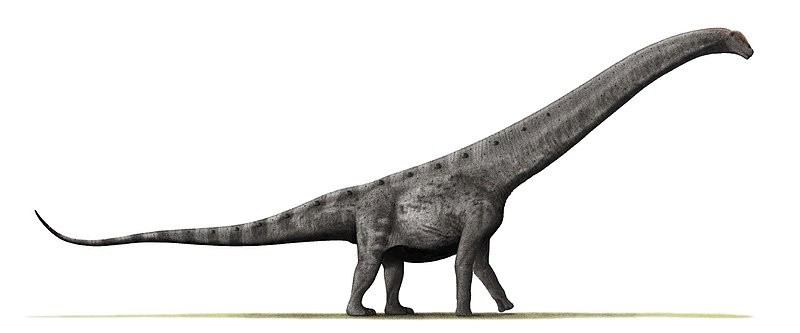In Argentina, the remains of a gigantic dinosaur have been unearthed. According to experts, if their assumptions are right, the creature could stand toe with the largest known species to have walked the planet.

The bones, or what remained of it, were found in Neuquen Province in northwest Patagonia. It has been identified as a species from the sauropod dinosaur family. Sauropods are known for their astoundingly long neck and tails, gigantic legs, and of course, their enormous size. The dinosaurs from this family are known to have been the largest land creature to have ever roamed the Earth.
Origins
Unfortunately, the fossilized remains are not found in mint conditions. The skeletal cluster was not even enough to be considered as a complete skeleton. It mostly consists of pelvic bones and vertebrae. Fortunately, the samples were enough to identify the massive scale of the creature.
Professional from the journal Cretaceous Research suggests that the animal might have come from an unknown group of Patagonian sauropods.
The remains closely resemble those of an Andesaurus. Andesauruses are "super-sized titanosaur" that is said to have existed during the mid-Cretaceous. These creatures grew up to 18 meters or 59 feet in length.
After a series of studies and tests, the fossilized bone fragment indicates that the remains belonged to something way more significant than the Andesaurus. If those results were accurate in measuring the prehistoric animal's size, the remains might belong to the largest known land animals, the Patagotitan or the Argentinosaurus. Both are sauropods.
It seems like the bones might have belonged to something even larger because, according to the journal publication, it is one of the most gigantic sauropods remains ever found. Because of the uncertainty of the species that left the remains, many paleontologists are quick to assume that the Argentinean fossil might have belonged to an entirely new species.
"New Specimen"
The alleged "new specimen" could have probably exceeded the Patagotitan in size.
Despite the size difference, it's still not easy to dismiss the possibility of the remains originating from a Patagotitan because the creatures are only recently discovered, meaning much information is still unknown about the sauropod species.
Identifying and differentiating sauropod remains have never been easy; according to one of the researchers, "The record of super-sized titanosaur sauropods has traditionally been extremely fragmentary, although recent discoveries of more complete taxa have revealed significant anatomical information previously unavailable due to preservation biases."
Coexistence
"The specimen here reported strongly suggests the coexistence of the largest and middle-sized titanosaurs with small-sized rebbachisaurids (a family of sauropod dinosaurs) at the beginning of the Late Cretaceous in Neuquén Province, indicating putative niche partitioning."
Although much about the fossil still remained unclear, paleontologists considered the find as a monumental achievement. The location, the bone condition, everything about the discovery gave them insights into the lives of sauropods.
The number of sauropod fossils from different species found near each other implied that numerous giants coexisted and lived alongside one another.
For more news updates about prehistoric animals, don't forget to follow Nature World News!
© 2025 NatureWorldNews.com All rights reserved. Do not reproduce without permission.





